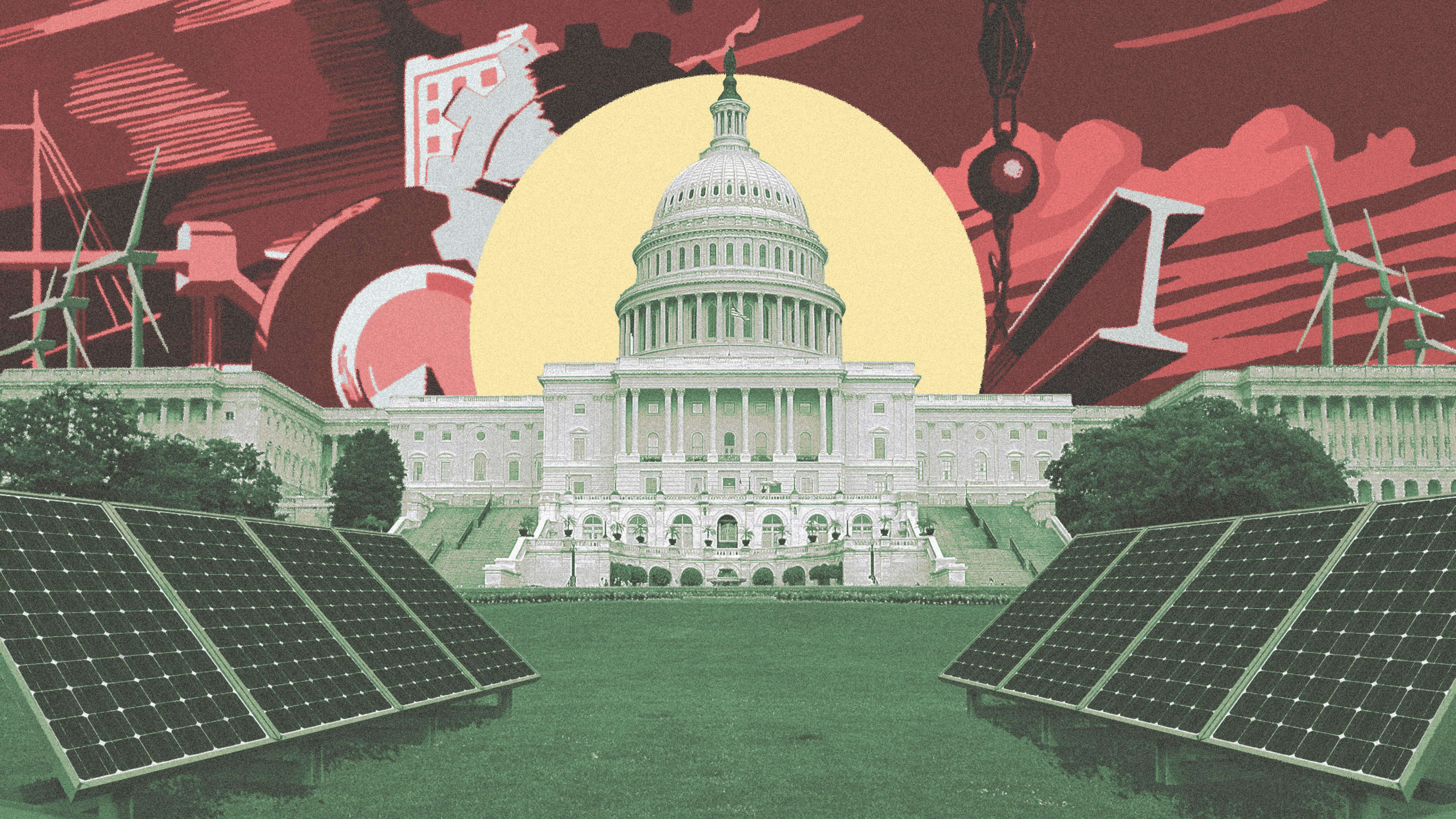As the Democratic presidential debates unfold this week, there’s a phrase that’s sure to be heard many times: The Green New Deal.
During the campaign for the 2018 midterms, the concept of a massive government stimulus package that would fund a rapid transition to a clean energy economy became a major issue, animating voters and serving as a rallying cry for many of the insurgent campaigns of the election, most notably that of Representative Alexandria Ocasio-Cortez. As a newly elected Congresswoman in November, she joined youth organizers from the climate justice group Sunrise Movement at a protest in Nancy Pelosi’s office calling for such an approach. In February, she and Senator Ed Markey introduced a resolution in Congress to support the idea of the Green New Deal, which has begun to shape the national conversation around the dual challenges of climate change and economic inequity. Five of the presidential candidates in the Senate—Booker, Gillibrand, Harris, Sanders, and Warren—signed on as co-sponsors, and the rest of the field has been required to respond to the legislation as they shape their own climate policies. But even as candidates unveil their own plans, the Green New Deal holds sway: An Insider poll recently found that Democratic voters vastly prefer the resolution to Joe Biden’s climate plan, which sets a less urgent time frame for decarbonizing the economy.
Though the resolution lacks specific mandates, the concept of a Green New Deal is firm in its goal of achieving net-zero carbon emissions in the next decade, creating millions of high-paying jobs for all, providing equal access to necessities like affordable housing and healthy food, and promoting justice for the historically marginalized people in the transition to a new economy. “Climate change is the greatest challenge we face,” Markey tells Fast Company. “Every industry and every business will be compelled to respond.”
This week, Fast Company will look at eight sectors of the U.S. economy and how they might transform under the Green New Deal. Read more here:
The Green New Deal has emerged as the prevailing framework for confronting the most pressing issues facing the country today. Even though it has yet to be codified as national policy, momentum is growing at the state level: In April, Minnesota introduced a bill calling for a state-level version of the framework. Just last week, New York passed the Climate and Community Protection Act, which mirrors the Green New Deal’s calls for decarbonization and job creation. Oregon is also likely to pass a bill putting a cap and price on carbon emissions, which could open up funding for the types of justice initiatives the Green New Deal wants to bring about.
Because the resolution (and many of the state resolutions that followed) are frameworks, the next step, Markey says, is for him and the other backers is to “go industry by industry and talk about what needs to be done, and why it is possible for that industry to do it.” Here at Fast Company, we are offering a look at how these conversations might unfold.
The Green New Deal has captured national attention for its confrontation of major and interconnected issues, and its broad scope symbolizes the enormous challenge of tackling them both. Focusing on its application to specific industries can begin to ground the symbolism in some detail. Every industry, as Markey says, will need to adapt and change to effectively address the dual issues of climate change and economic inequity. These conversations are already happening at private companies, in governments, and around nonprofit and advocacy organizations. This week, we’ll be looking at eight sectors of the U.S. economy and considering what changes might be on the horizon for them as they work to address these challenges. Read the whole series here.
What’s encouraging: Many of the transitions already underway in these industries fit with what the Green New Deal calls for. Fashion is working to clean up its supply chains and implement humane labor conditions and pay for workers. Across the transportation sector, the need to electrify vehicles and fleets is now a matter of course. In the building industry, leaders are considering how to rapidly improve building efficiency and create more affordable housing while providing a steady job pipeline to marginalized workers.
But what’s obvious is that much more needs to happen. The stories you’ll read this week give a sense of both how much, and how that work might be carried out. “The Green New Deal is a framework for exerting external pressure on industries,” Markey says. “But it can also be a framework for internal corporate operations for every industry, and guide the discussion going forward inside every company and sector.”
Another word you might have heard quite a bit if you’ve followed the conversation around the Green New Deal is radical. It would cost too much—trillions of dollars—to be feasible. Its demands are too steep to be swiftly implemented. The costs of failing to take action in this comprehensive way, though, are both too certain and too significant to ignore. If climate change continues unchecked, it could lead to billions, if not trillions, in losses each year due to extreme weather and associated damage to land and infrastructure. And the U.S.’s widening prosperity gap also threatens to grind the economy to a halt. If leaders across the sectors we feature (and many more) want to ensure the long-term health of their industries, they have to act quickly, conscientiously, and yes, broadly, to make these changes now. And with the Green New Deal, they have the framework to do so.
Recognize your brand’s excellence by applying to this year’s Brands That Matter Awards before the early-rate deadline, May 3.
